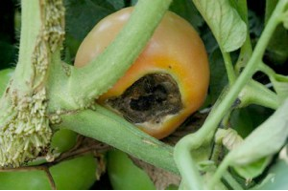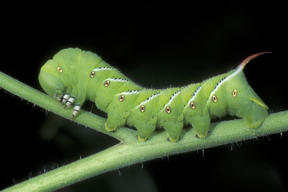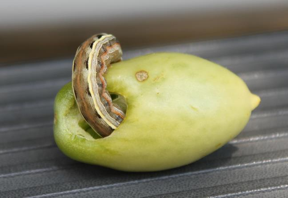Why Are My Tomatoes Turning Brown?
go.ncsu.edu/readext?364468
en Español / em Português
El inglés es el idioma de control de esta página. En la medida en que haya algún conflicto entre la traducción al inglés y la traducción, el inglés prevalece.
Al hacer clic en el enlace de traducción se activa un servicio de traducción gratuito para convertir la página al español. Al igual que con cualquier traducción por Internet, la conversión no es sensible al contexto y puede que no traduzca el texto en su significado original. NC State Extension no garantiza la exactitud del texto traducido. Por favor, tenga en cuenta que algunas aplicaciones y/o servicios pueden no funcionar como se espera cuando se traducen.
Português
Inglês é o idioma de controle desta página. Na medida que haja algum conflito entre o texto original em Inglês e a tradução, o Inglês prevalece.
Ao clicar no link de tradução, um serviço gratuito de tradução será ativado para converter a página para o Português. Como em qualquer tradução pela internet, a conversão não é sensivel ao contexto e pode não ocorrer a tradução para o significado orginal. O serviço de Extensão da Carolina do Norte (NC State Extension) não garante a exatidão do texto traduzido. Por favor, observe que algumas funções ou serviços podem não funcionar como esperado após a tradução.
English
English is the controlling language of this page. To the extent there is any conflict between the English text and the translation, English controls.
Clicking on the translation link activates a free translation service to convert the page to Spanish. As with any Internet translation, the conversion is not context-sensitive and may not translate the text to its original meaning. NC State Extension does not guarantee the accuracy of the translated text. Please note that some applications and/or services may not function as expected when translated.
Collapse ▲If you have tomatoes turning brown on the bottom then you are not alone. This time of year we have many calls about brown spots on tomatoes, squash, peppers, watermelons, etc. This is called blossom-end rot (BER), which is a nonparasitic disease of tomatoes and other fruiting vegetables.
The first symptom is a slight water-soaked area on or near the blossom end of the fruit. The affected area soon darkens and enlarges in a constantly widening circle until the fruit begins to ripen. The blossom end turns dark and has a dry, leathery appearance. With peppers the rot looks tan in color and can often be mistaken for sunscald, which is white in color.
The cause of this browning is due to the lack of calcium in the developing fruit. This comes from the lack of calcium uptake from the soil or extreme fluctuations in water supply. Extreme heat and humidity can also play a role in the development of BER. This year our tomatoes and other vegetables have been under tremendous heat stress and we are seeing more BER than we may be used to.
Sometimes there are no quick cures for things like BER. Often the plants tend to correct themselves, and as fruit is formed the problem subsides. If plants experience a quick rate of growth, do not receive uniform watering, or experience high temperatures, then we often see BER show up. There are preventive measures you can take to try to avoid BER. First, make sure you do a soil test to determine if the pH is between 5.8 and 6.2. If not, follow the report and apply the correct amount of dolomitic limestone in order to supply sufficient calcium to the plant. Another source of calcium would be gypsum or you can use calcium nitrate when fertilizing your plants.
Since BER is closely related to extremes in the water supply it is important to try to regulate the moisture supply to the plant. After plants are well established it is best to avoid disturbing the roots since tomatoes are shallow rooted plants. Mulching can aid in moisture retention and help maintain an even supply of moisture. In general, tomato plants need at least one inch of water per week either by rainfall or supplemental irrigation.
The removal of affected fruit will aid in the development of the remaining fruit on the plant. Other things to look out for on tomatoes at this time would be the tomato hornworm and the tomato fruit worm. Good luck with your tomatoes!
For more information about tomatoes or vegetable gardening, contact your local Franklin County office at 919-496-3344.
Blossom End Rot on Tomato
Tomato Hornworm
Tomato Fruit Worm







